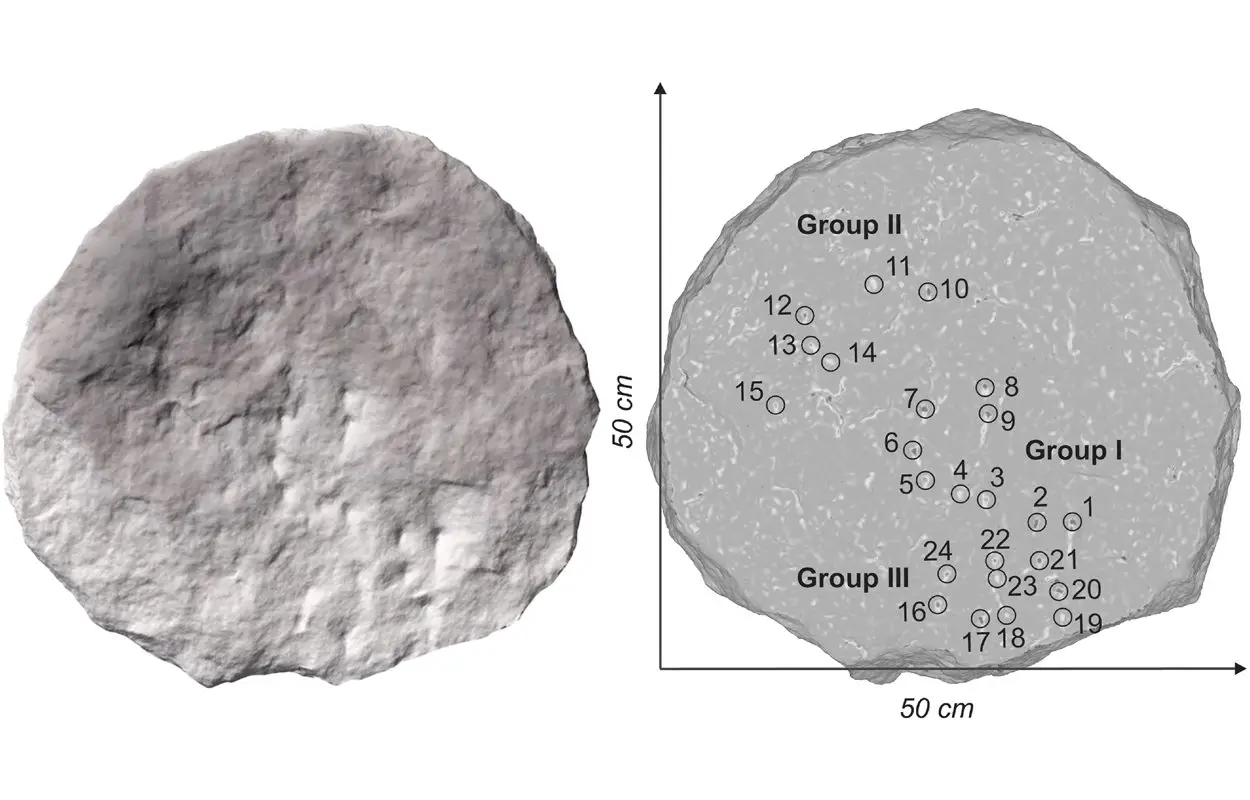
Castelliere di Rupinpiccolo is an ancient hillfort, located in the Province of Trieste, Italy.
The hillfort housed a fortified settlement that emerged during the Middle Bronze Age, with archaeological evidence indicating that occupation continued through the Iron Age until the site was abandoned around the 5th century AD.
In a press announcement by the Italian National Institute of Astrophysics (INAF), two large circular stones measuring 50 centimetres in diameter were recently discovered at the entrance to the hillfort.
According to Paolo Molaro from INAF, and researchers from the Ca’ Foscari University of Venice and ICTP, one of the stones is a representation of the sun, while the other is a carved celestial map dated to the 4th century BC.

A study of the stones has been published in the German astronomy magazine, Astronomische Nachrichten, in which the study authors have identified that the celestial map depicts the sky above Rupinpiccolo from around 2,500-years-ago, making the discovery one of oldest known celestial maps founds in Italy.
The team have identified 29 engravings on the stone, which correspond precisely to the constellations of Scorpius, Orion, the Pleiades and Cassiopeia. Based on the angle of the cut marks in the stone, the researchers suggest that the carvings were likely made by the same individual using a hammer and a rudimentary metal chisel with a 6-7 mm tip.
A specific star engraved on the stone, identified as Theta Scorpii, has become obscured from sight at Castelliere di Rupinpiccolo due to its low position on the horizon. However, upon using the Stellarium program to simulate the night sky, researchers discovered that this star was observable from the ancient hillfort around 400 BC.
The 29th engraving is of particular interest as it has no correlation with celestial models. Instead, the study authors propose that it could actually be a representation of a supernova, a transient phenomenon that appeared suddenly in the night sky in ancient times for days or months, and then fade away and disappear.
If this is indeed the case, the researchers suggest that tracing the focal point in the night’s sky by correlating with the 29th engraving, this could potentially reveal a black hole left behind by the supernova explosion.
Header Image Credit : INAF

Dr. Thomas Hughes is a UK-based scientist and science communicator who makes complex topics accessible to readers. His articles explore breakthroughs in various scientific disciplines, from space exploration to cutting-edge research.







